
The Minnesota Democratic–Farmer–Labor Party (DFL) is the affiliate of the Democratic Party in the U.S. state of Minnesota. As of 2024, it controls four of Minnesota's eight U.S. House seats, both of its U.S. Senate seats, the Minnesota House of Representatives and Senate, and all other statewide offices, including the governorship, making it the dominant party in the state.
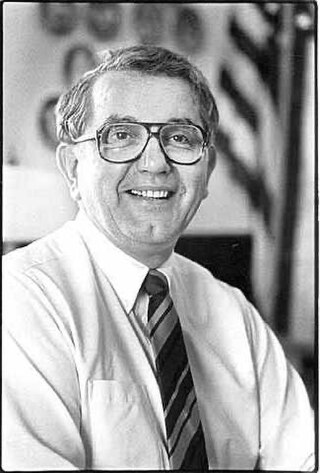
Rudolph George Perpich Sr. was an American politician and dentist who served as the governor of Minnesota from 1976 to 1979 and again from 1983 to 1991. A member of the Democratic-Farmer-Labor Party, he is labeled as Minnesota's 34th and 36th governor. He was also the state's only Roman Catholic governor and the only one to serve non-consecutive terms.

Wendell Richard "Wendy" Anderson was an American hockey player, politician, and the 33rd governor of Minnesota, serving from January 4, 1971, to December 29, 1976. In late 1976 he resigned as governor in order to be appointed to the U.S. Senate after Senator Walter Mondale was elected Vice President of the United States. Anderson served in the Senate from December 30, 1976, to December 29, 1978. After losing the 1978 Senate election to Rudy Boschwitz, he resigned a few days before the end of his term to give Boschwitz seniority.

Karl Fritjof Rolvaag was an American diplomat and politician who served as the 31st governor of Minnesota from March 25, 1963, to January 2, 1967, as a member of the Democratic-Farmer-Labor (DFL) Party. He was the son of the author and professor Ole E. Rølvaag.

The Republican Party of Minnesota is the state affiliate of the Republican Party in Minnesota and the oldest active political party in the state. Founded in 1855, the party controls four of Minnesota's eight congressional House seats. The last Republican governor of the state was Tim Pawlenty, who served from 2003 to 2011. The party's headquarters is located in Edina, Minnesota and the current chairman is David Hann. Starting in 2023 and as a result of the 2022 elections, the Republican Party of Minnesota does not have substantial power over the state, holding no statewide executive offices, no U.S. Senate seats, and minorities in the state legislatures.
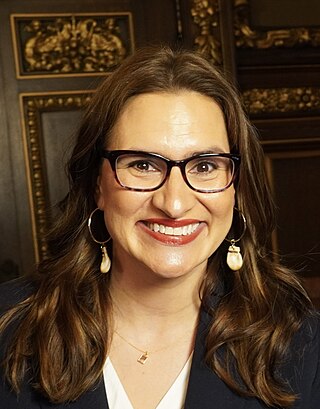
The lieutenant governor of Minnesota is a constitutional officer in the executive branch of the U.S. state of Minnesota. Fifty individuals have held the office of lieutenant governor since statehood. The incumbent is Peggy Flanagan, a DFLer and the first Native American elected to a statewide executive office in Minnesota's history.
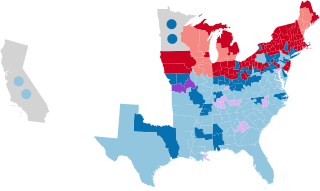
The 1856–57 United States House of Representatives elections were held on various dates in various states between August 4, 1856, and November 4, 1857. Each state set its own date for its elections to the House of Representatives. 236 representatives were elected in 31 states and the pending new state of Minnesota before the first session of the 35th United States Congress convened on December 7, 1857.

The secretary of state of Minnesota is a constitutional officer in the executive branch of government of the U.S. state of Minnesota. Twenty-two individuals have held the office of secretary of state since statehood. The incumbent is Steve Simon, a member of the Minnesota Democratic-Farmer-Labor Party.
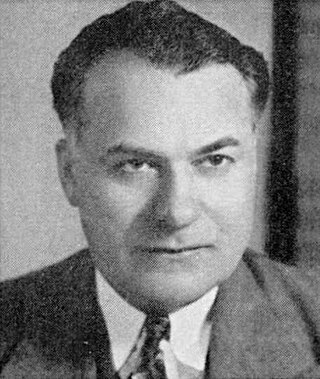
Harold Christian Hagen was a Minnesota politician. He was a Farmer-Laborite and then a Republican, serving the ninth district from 1943 to 1955.
Thomas J. Harens is a former third-party candidate for President of the United States in the 2004 presidential election in which he was only on the ballot in Minnesota. His running mate was Jennifer A. Ryan. He had created the Christian Freedom Party in June 2004, and filed his "affidavit of candidacy" with the Minnesota Secretary of State in August.

The 1954 Minnesota gubernatorial election took place on November 2, 1954. In a rematch of the 1952 election, Minnesota Democratic–Farmer–Labor Party candidate Orville Freeman defeated Republican Party of Minnesota incumbent C. Elmer Anderson.

The 1870–71 United States Senate elections were held on various dates in various states. As these U.S. Senate elections were prior to the ratification of the Seventeenth Amendment in 1913, senators were chosen by state legislatures. Senators were elected over a wide range of time throughout 1870 and 1871, and a seat may have been filled months late or remained vacant due to legislative deadlock. In these elections, terms were up for the senators in Class 2.
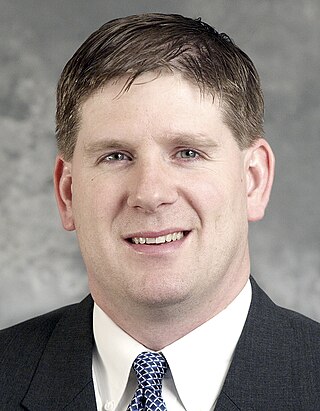
The 2012 Minnesota House of Representatives election was held in the U.S. state of Minnesota on November 6, 2012, to elect members to the House of Representatives of the 88th Minnesota Legislature. A primary election was held in several districts on August 14, 2012.
A general election was held in the U.S. state of Minnesota on November 8, 2016. All seats in the Minnesota Senate and Minnesota House of Representatives were up for election as well as Minnesota's 10 presidential electors and Minnesota's eight seats in the United States House of Representatives. A primary election was held on August 9, 2016.
The 1996 Minnesota House of Representatives election was held in the U.S. state of Minnesota on November 5, 1996, to elect members to the House of Representatives of the 80th Minnesota Legislature. A primary election was held on September 10, 1996.

The 1996 Minnesota Senate election was held in the U.S. state of Minnesota on November 5, 1996, to elect members to the Senate of the 80th and 81st Minnesota Legislatures. A primary election was held on September 10, 1996.
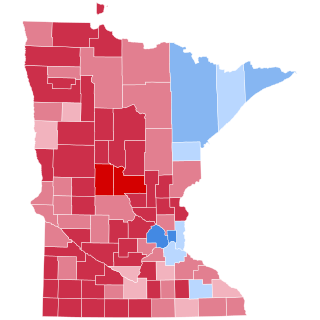
The 2016 United States presidential election in Minnesota was held on Tuesday, November 8, 2016, as part of the 2016 United States presidential election in which all 50 states plus the District of Columbia participated. Minnesota voters chose electors to represent them in the Electoral College via a popular vote, pitting the Republican Party's nominee, businessman Donald Trump, and running mate Indiana Governor Mike Pence against Democratic Party nominee, former Secretary of State Hillary Clinton, and her running mate Virginia Senator Tim Kaine. Minnesota has ten electoral votes in the Electoral College.

The 1912 United States presidential election in Minnesota took place on November 5, 1912 as part of the 1912 United States presidential election. Minnesota voters chose 12 electors to the Electoral College, which selected the president and vice president.

The 1954 United States Senate election in Minnesota took place on November 2, 1954. Incumbent Democratic U.S. Senator Hubert H. Humphrey defeated Republican Minnesota State Treasurer Val Bjornson, to win a second term.



















